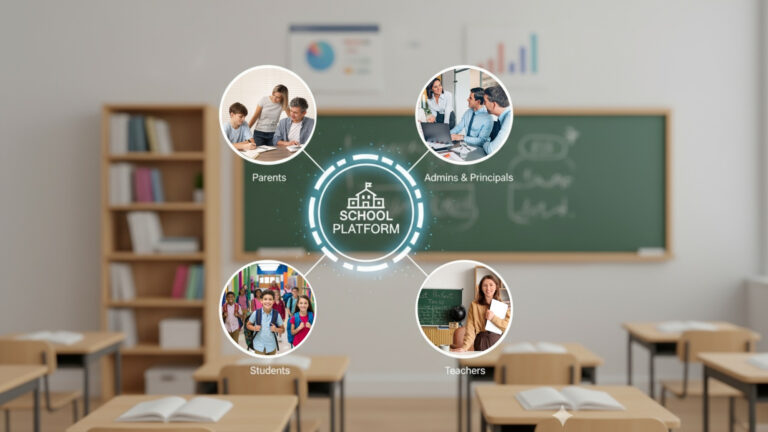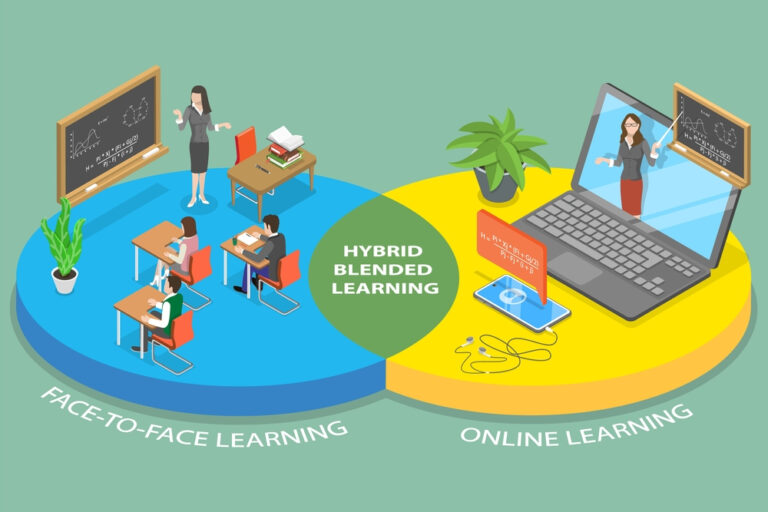What Is a Learning Management System (LMS)?
A Learning Management System (LMS) is a digital platform designed to simplify and streamline the entire educational process. From sharing lessons and assigning homework to tracking student progress and encouraging communication, a well-designed LMS supports both academic delivery and administrative efficiency.
Choosing the right learning management system in 2025 can determine how efficiently your school operates. For schools and educational institutions, this choice is more critical than ever, as new technologies like AI, personalized learning, and school-wide integration reshape the expectations of modern education.
According to Grand View Research, the global LMS market is projected to reach USD 28.58 billion in 2025, growing at nearly 20% CAGR through 2030. This rapid expansion shows how schools worldwide are adopting digital learning platforms to improve engagement, performance tracking, and communication.
How Does an LMS Differ from an SMS or SIS?
While the terms LMS, SMS, and SIS are sometimes used interchangeably, each has its own function:
- LMS (Learning Management System) focuses on teaching and learning. It’s where teachers upload materials, students complete assignments, and progress is monitored.
- SMS (School Management System) is broader. It includes tools for managing the entire school operation, such as fee tracking, HR, evaluations, transportation, and more.
- SIS (Student Information System) is a critical component of both SMS and LMS platforms. It stores and organizes student data, including grades, attendance, health records, and more.
The ideal platform unites the most essential features of each system, engaging learning delivery from an LMS, streamlined operations from an SMS, and centralized student information from an SIS, so schools save time, reduce complexity, and create a truly connected experience.
Top Features to Consider When Choosing an LMS in 2025
All-in-One Integration Matters More Than Ever
School principals and administrators are no longer looking for just a grading system or a homework tracker; they want a complete school platform. In 2025, an effective LMS should work hand in hand with SMS and SIS tools. It should allow schools to manage communication, student performance, and administrative operations all in one place. This integration saves time, reduces errors, and creates a more connected learning environment.
A System Built for Communication
Modern schools thrive on clear communication between teachers, students, and parents. A strong LMS in 2025 must include messaging tools, announcements, class walls, and real-time updates. Whether it’s a student submitting an assignment or a parent receiving a performance report, the system should keep everyone in the loop.
Grading and Assessment Tools That Go Beyond Numbers
In 2025, grading systems are expected to be more flexible, data-driven, and aligned with student-centered learning. Look for a learning management system that supports multiple assessment types, formative, summative, and even peer reviews. It should also offer detailed reports that help teachers personalize their instruction and support.
Flexibility for Different School Models
Not all schools operate the same way. Some follow American curricula, others use national systems, and many run hybrid or international models. The best learning management system in 2025 will offer customizable modules that adapt to different grading schemes, subjects, and structures. This flexibility makes it easier for schools to grow, evolve, and maintain consistency across campuses.
The Power of Integration
In 2025, schools can’t afford to juggle multiple disconnected tools. From fee management and bus tracking to communication apps, content libraries, and grading systems—every process should work together in one place. That’s why it’s critical to choose a system that’s built for easy integration. When your LMS connects seamlessly with other tools, you save time, reduce errors, and give teachers, parents, and students a unified experience without switching between apps. The edge of an integrated platform is simple: it turns scattered systems into one connected hub, making your school more efficient, reliable, and future-ready.
Easy User Experience for All Stakeholders
Whether it’s a parent checking homework, a teacher uploading classwork, or an admin managing class schedules, the LMS should be intuitive for everyone. User experience is no longer just a nice-to-have; it’s essential. Clear dashboards, mobile access, and smart notifications all play a role in making a school management system more effective.
Data Security and Reliability
Schools handle sensitive information, from personal student data to payment records. That’s why a trustworthy LMS should follow the latest data security standards, offer role-based access, and ensure uptime during peak school hours. A good platform keeps your data safe and always accessible.
A Strong Support and Training System
No matter how powerful a system is, your team needs to know how to use it. Choose an LMS provider that offers onboarding support, how-to resources, and responsive customer service. A dedicated success team can make the difference between a feature you forget and a feature that transforms your school.
Conclusion: The LMS Is the New Backbone of Your School
As we move deeper into 2025, the line between learning and administration continues to blur. Schools are expected to deliver high-quality learning experiences while managing data, communication, and operations.
A modern, integrated LMS does more than digitize education; it empowers schools to operate smarter, faster, and more collaboratively.
That’s exactly what Skoolix delivers:
- All-in-One Platform: LMS, SMS, and SIS in one connected system.
- User-Friendly Experience: Intuitive dashboards with minimal training required.
- Mobile App Access: teachers, parents, and students stay connected anytime, anywhere.
- Supports Diverse Models: Built to adapt to different curricula, grading systems, and school structures, National, or international.
- Streamlined Communication: Keeps teachers, students, and parents connected through announcements, messages, class walls, and real-time updates.
- Simplified Grading & Assessment: Offers flexible, data-driven tools for assignments, quizzes, and performance insights, all in one place.
- Enterprise-Level Security: protects sensitive school and student data.
- White-Label Option: Launch your own school-branded app with your name and logo.
- Ongoing Support & Training: a responsive success team guiding you every step.
Skoolix brings all the essential elements of digital learning together in one easy-to-use platform, giving your school everything it needs for teaching, communication, and management in one place.
Ready to Take the Next Step?
If your school is exploring how to simplify operations, improve parent engagement, and boost learning outcomes, it’s the right time to act.
Request a Free Demo with Skoolix today to see how an all-in-one school platform can transform the way your school connects, teaches, and grows.
Everything Schools Ask About LMS Platforms in 2025
The main purpose of a Learning Management System (LMS) is to simplify and enhance the entire teaching and learning experience. It allows teachers to share lessons, assign homework, track progress, and communicate with students and parents, all in one place.
A strong LMS helps schools save time, stay organized, and create a more engaging, connected learning environment for everyone involved.
In 2025, schools should prioritize systems that bring everything together in one connected experience. Look for platforms that offer seamless integration, combining academics, communication, and administration in a single hub.
Equally important are multilingual support for diverse communities, a user-friendly interface that requires minimal training, and real-time analytics to track student performance and school operations.
User experience determines how easily teachers, students, and parents can use the system day to day. A well-designed LMS with intuitive navigation, clear dashboards, and mobile access encourages consistent use and minimizes training time.
When the platform feels simple and natural to use, adoption rates rise, communication improves, and the entire school community benefits from smoother, more efficient workflows.
An effective grading system should go beyond just recording marks — it should provide meaningful insights that support student growth. Look for a system that’s flexible, allowing customization by subject or curriculum, and data-driven, offering detailed performance analytics.
It should also support multiple assessment types, from quizzes and projects to peer reviews, helping teachers tailor instruction and provide personalized feedback that enhances learning outcomes.
In 2025, LMS technology is evolving to meet the growing demand for smarter, more connected learning environments. The biggest trends include AI-driven analytics for tracking student progress, personalized learning paths that adapt to each student’s needs, and mobile-first design for on-the-go access.





